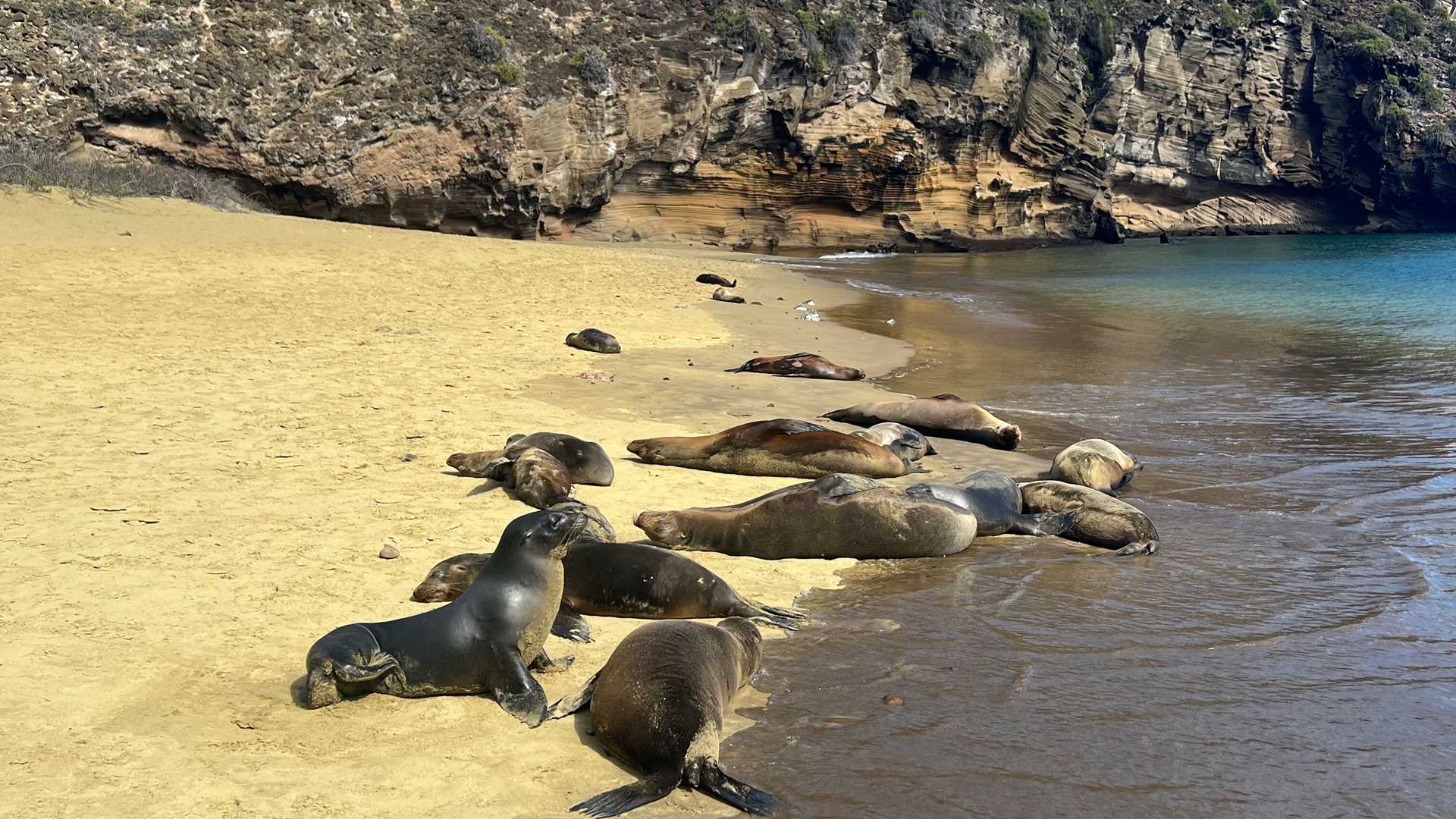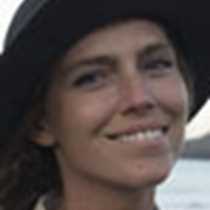Guests onboard National Geographic Endeavour II spent the day exploring San Cristobal Island. We began the day with a hike at Punta Pitt; this was our first chance during the expedition to observe the red-footed booby. The red-footed booby inhabits two large colonies on San Cristobal and Genovesa Islands. This particular species of booby, unlike the blue-footed and Nazca, possesses the anatomy required to grasp branches and therefore, they can nest in trees. They choose to live on these two islands because of their specific characteristics. The Galapagos hawk is absent from both islands, keeping red-footed booby hatchlings safe from the islands’ apex terrestrial predator. The coastlines of these islands exhibit a steep shelf, so the deep-water prey of the birds is in close proximity to their nests. The red-footed booby population in Galapagos exhibits two morphotypes: white and brown. The white morphotype, in contrast to other populations in the world, represents a significantly smaller proportion than that of the brown morphotype. The red-footed booby is the smallest of the booby species in the Galapagos and lays a single egg.
We were lucky to observe several blue-footed booby pairs with recent hatchlings. Some pairs were exhibiting their ceremonial courtship dance. The blue-footed booby populations in Galapagos have dwindled over recent decades due to climate change and overfishing of their prey species–we were delighted to see so many dancing at Punta Pitt. The beach at Punta Pitt glistens when the sun comes out, with heavy deposits of olivine at this site. It’s a lovely sight to see Galapagos sea lions glittering in the sun as they bask on the sand. After our hike, guests had the chance to snorkel with sea lions off the beach.
After a special Galapagueño lunch with local products from the islands, guests disembarked for a relaxing stroll along a beautiful white sand beach. There were blue-footed boobies and brown pelicans diving along the shoreline. We enjoyed a beautiful sunset followed by cocktail hour while circumnavigating the famous Kicker Rock; it was the perfect way to end a marvelous expedition in the islands.
Photo caption and photographer: Galapagos sea lions rest on the beach at Punta Pitt. The Galapagos sea lion shares an ancestral species with the California sea lion. San Cristobal Island is home to the largest population of Galapagos sea lions in the archipelago. Photo by Alexandra Widman







